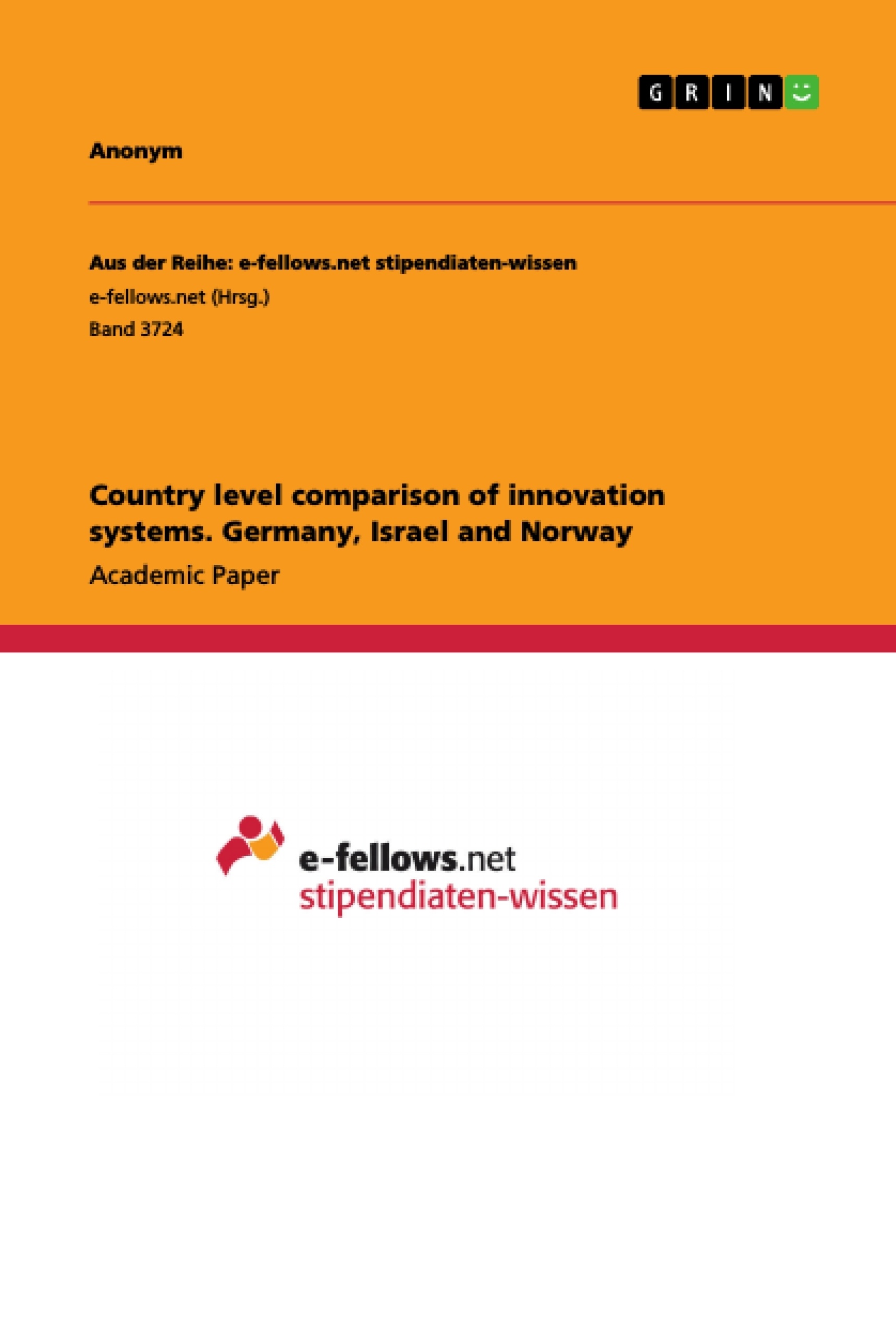Innovation lies at the heart of globalisation, whereby to stay relevant in competitive markets and improve economic growth, countries must put in place strong National Innovation Systems (NIS). Thus, the key goal of this paper is to analyse and compare the National Innovation Systems of various countries. Germany, Israel and Norway were chosen as part of this study, particularly because of their strong innovative history, high levels of innovation and the importance of innovation for their future competitiveness. Firstly, an analysis of core primary data provides a brief overview of each country. Subsequently, Porter’s Diamond model, and its four factors, helps us evaluate in detail each of the country’s NIS. After analysis, each country is methodically discussed using research, results and the Triple Helix Model. Using this, we found Israel has a highly efficient NIS, showing incredible dynamic development in recent years. Germany’s NIS was found to be deeply rooted in their economy and Norway’s lower levels of GDP and patent applications per capita indicated lower levels of innovation. It is recommended each country focus on maintaining strong NIS to combat future challenges, including the trend of climate change.
Inhaltsverzeichnis (Table of Contents)
- Introduction
- Analysis
- Country Overview
- Factor Conditions
- Demand Conditions
- Related and Supporting Industries
- Firm Strategy, Structure and Rivalry
- Government
- Discussion
- Triple Helix
- Germany
- Israel
- Norway
Zielsetzung und Themenschwerpunkte (Objectives and Key Themes)
This paper aims to analyze and compare the National Innovation Systems (NIS) of Germany, Israel, and Norway. The selection of these countries is based on their strong innovative history, high levels of innovation, and the importance of innovation for their future competitiveness.
- Analysis of the National Innovation Systems (NIS) of Germany, Israel, and Norway
- Comparison of the NIS across these countries
- Application of Porter's Diamond Model to assess the NIS
- Discussion of the Triple Helix Model in relation to the NIS
- Evaluation of the strength and efficiency of each country's NIS
Zusammenfassung der Kapitel (Chapter Summaries)
The introduction provides an overview of the paper's objectives and the importance of innovation in the global economy. Chapter 2 delves into the analysis of each country's National Innovation System. This analysis utilizes Porter's Diamond model, examining factors such as factor conditions, demand conditions, related and supporting industries, firm strategy, structure, and rivalry, and the role of government. Chapter 3 discusses the findings of the analysis, incorporating the Triple Helix model and focusing on the strengths and weaknesses of each country's NIS. This chapter examines the individual cases of Germany, Israel, and Norway in detail.
Schlüsselwörter (Keywords)
The key terms and concepts explored in this work include National Innovation Systems, Porter's Diamond Model, Triple Helix Model, innovation, competitiveness, economic growth, Germany, Israel, Norway, factor conditions, demand conditions, related and supporting industries, firm strategy, structure, and rivalry, government, and comparative analysis.
- Quote paper
- Anonym (Author), 2020, Country level comparison of innovation systems. Germany, Israel and Norway, Munich, GRIN Verlag, https://www.grin.com/document/974101



